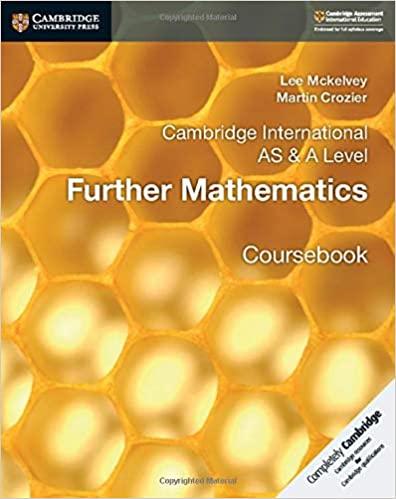Answered step by step
Verified Expert Solution
Question
1 Approved Answer
10. Use the following pattern to complete parts a. and b. below. 4 + 12 = 16 4 + 12 + 20 = 36

10. Use the following pattern to complete parts a. and b. below. 4 + 12 = 16 4 + 12 + 20 = 36 4 + 12 + 20 + 28 = 64 a. What is an inductive generalization based on this pattern, where n is equal to the number of terms being summed? A. The sum of the terms is 4(n + 1). B. The sum of the terms is 4n. C. The sum of the terms is 4.2n+1. D. The sum of the terms is 4n. b. Based on the generalization in (a), find the sum of the sequence 4+ 12 +20 + ... + 52. The sum of the sequence is 11. Find the first five terms of the sequence whose nth term is given by the following. -3n+1 The first term is The second term is The third term is The fourth term is The fifth term is 12. Find the sum of the sequence. 31+32 +33 +34 + ... + 122 The sum is 13. Use Gauss's approach to find the following sums (do not use formulas). a. 1+2+3+4+...+998 b. 1+3+5+7+ ... + 101 a. The sum of the sequence is b. The sum of the sequence is 14. How many terms are there in the following sequence? 19, 21, 23, 53 The answer is terms.
Step by Step Solution
There are 3 Steps involved in it
Step: 1

Get Instant Access to Expert-Tailored Solutions
See step-by-step solutions with expert insights and AI powered tools for academic success
Step: 2

Step: 3

Ace Your Homework with AI
Get the answers you need in no time with our AI-driven, step-by-step assistance
Get Started


